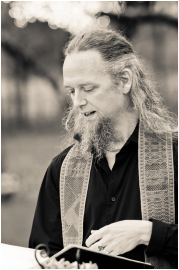
Balance is one of those things that maps perfectly into the asana practice. We can feel out of balance in life due to many factors - giving too much, doing too many things, not taking care of ourselves. Once you've got a yoga practice going, you get aware of being in and out of balance in your daily life.
And, being a yogi, you've got teachers that throw the balances poses in, when you like it and when you don't. Some of you may even have the teachers who not only throw in lots of balance poses and opportunities, but like for you to long hold them, as well.
You know how it is, somedays you've got it, no worries - bam, catch that foot and just stand there steady; hit that tree and stand like a hickory... other days you're all over the place, might as well be practicing 'timberasana' for all your effort. And, for me at least, the best part is that it generally doesn't correlate to anything. I can be having a really strong practice and have no balance; or get a lot of balance in arm balances, but not a breath in tree or half moon. Or, I can be as subtle and inward as can be and feel really not up for a challenge, and lo and behold, it's so right there... I've had every tree: sequoia, weeping willow, Charlie Brown's Christmas tree, you name 'em!
It's challenging, absolutely! Physically, mentally, even emotionally. And, while that is part of the intention - intentional tension - part of that process also yields insight into the true nature of balance. Balance is NOT the absence of effort, It's equal parts effort and ease. Balance is not steadiness; rather, for those who really practice, you know it's continual micro-adjustments and corrections, over and over. Holding the breath never helps hold the pose; holding a focal point, or dristhi, can really help. Dristhi is where we set a gazing point and then really look more through it than at it. At some points, or dristhi may be our toes, or our hands; in most standing balance poses, it helps to set it at the horizon.
I think of dristhi as an energetic extension of the breath, almost an externalized bandha (this is 100% my interpretation). It's a tether, energetically, with the breath and the dristhi point being like a rope and a pier, respectively. So, the body, like a boat, is afloat in the balance, slowing ebbing and flowing with one energetic tide, while the rope of the breath links to the pier of the dristhi and keeps one tethered to the moment.
In any of these instances, the trees or the boat, there is inherent motion in balance, Continued micro-adjustments, one way and then the other then again the one way. It's endless and can become really subtle. On a physical level, it's excellent for strengthening and helping stabilize the joints and connective tissues. All of those micro-adjustments help to create more long term stability and keep the connective tissues working and encouraging them to become more 'intelligent'.
And, beyond the physical, the humbling of falling 10 times, the burning quads - what else can be learned and then taken back into the greater experience of life? Can you learn to keep your balance in your daily world through many small individual motions, adjusting as you go? Can you laugh at not being able to stay balanced and just come back to it, once more, with a beginners mind? Can you set an energetic dristhi and tether yourself beyond the rise and fall of the swells in your day, and keep connected to something of higher intention or purpose?
Go, give it some thought, while you stand on one foot until you fall over - then smile, and give thanks and praise!!



